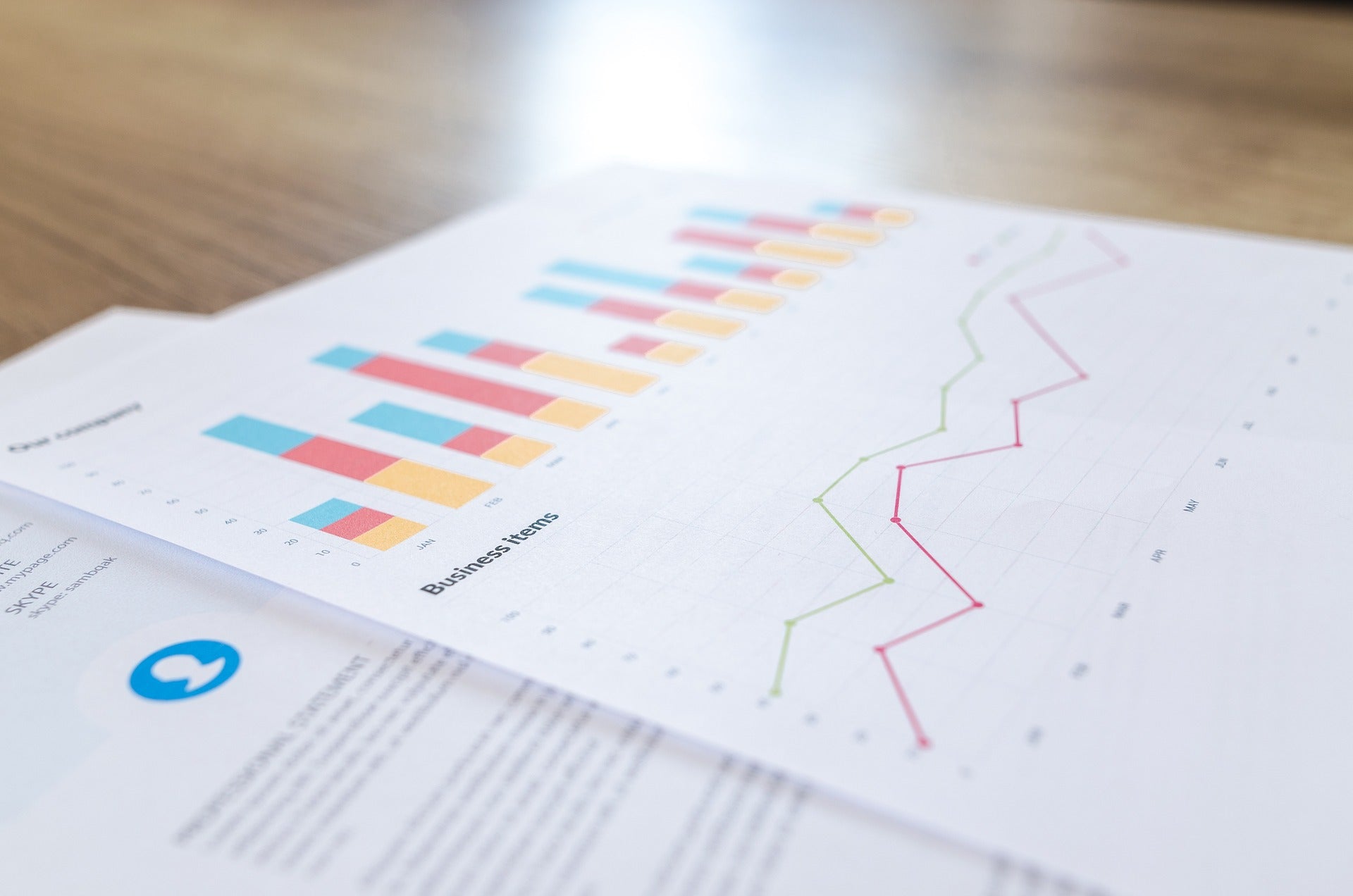We know you're excited to start growing your online store and making thousands of sales. The only problem is — you are going to have to do a lot more than just launch your store and hope people buy your products.
You need to understand the want, the need, and the desire for what you're offering. There is no other way around it. Whether it's SEO, PPC, or even just good old-fashioned relationships that drive traffic to your site, chances are, one of those things will likely not get you there alone.
That’s why it’s important to set up reports that will help you understand exactly how users interact with your Shopify website so that you can improve their experience and increase conversions.
Reports you should be setting up to make data-driven UI/UX and marketing decisions
1. Heatmaps or user activity report
Heatmaps are visual representations of user activity on a webpage. They provide insights into what works and what doesn't, helping you make data-driven decisions when it comes to UI/UX and marketing.
Heatmaps help you identify where people click, how they scroll, and where they hover over an image or text. They let you know if people are spending more time clicking on one particular button or another, which makes it easier for you to determine which items are most likely to generate sales.
For example, if you have an eCommerce site, this will show you which products are being viewed and purchased. If you have a blog, it will show which articles are being read and commented on.
Heatmaps also help detect if there is any problem with the user interface and highlights all the weak points within website design and content.
If you want to optimize your website for conversions or sales, this report can help you understand how users interact with your site — what they like and what they don’t like — so that you can make changes accordingly.
You can use powerful tools like Hotjar to prepare this much-needed report to make data-driven UI/UX and marketing decisions to boost your sales in 2023.

Source: Hotjar
2. Form completion report
The form completion report shows the conversion rate of each of your forms. It also shows the number of form submissions and their respective conversion rates. This information is vital because it helps you understand which forms are working and which aren't. You can use this information to optimize your forms.
Furthermore, you can also set up a sub-form completion report. This report shows the number of times each sub-question was answered by respondents in a survey or questionnaire.
A good use case for this report is if you want to know how often people are answering each question in your survey or questionnaire, which could help you decide whether some questions are unnecessary or not being used as much as others (and thus also help you remove them from further surveys).
3. Scroll depth report
Scroll depth is a metric that measures how far into a page visitors scroll. It’s a great way to see whether people are reading your content or just scrolling through it.
If you have a product page, this is the most important one to set up. It will tell you how many visitors scroll down on your page, where they stop, and what they do next. All these data points can help you improve the design of your landing page so that people are more likely to click the call-to-action (CTA) button.
You can use this information to decide what content you should add, remove, or move around on your site. You can also use it to see if people are getting stuck on anything, like a specific call-to-action button or an offer that isn’t working for them.
The best place to start with this report is to look at where most people stop reading. What's the common pattern? Is it because your headline doesn't grab their attention? Is it because there is no clear CTA?
For example, if your goal is to increase sales by 10% in 2023 and your average customer is scrolling down to section 2 out of the 8 sections of the product page, then it means you need to improve the design, messaging, or copy on each section so that people can see all the information they need before they make a decision.
The longer someone stays on your website and scrolls down, the higher chance they will buy something from you.
4. Session quality report
The session quality report is a tool that lets you know whether your visitors are staying on your site and engaging with the content.
This is a great way to get an overall picture of how your customers are interacting with your site, how long they're staying, how many pages they're viewing, and what they're doing on each page.
Typically, the session quality report shows you -
- How long people stay on your site, which pages they visit, how much time they spend on each page
- Which pages users visit first when they land on your page
- Which pages are getting high bounce rates (people leaving quickly)
- Pages per visit (the average number of pages viewed by each visitor)
This report can help you identify any issues with your content and design so that you can improve them.
Note that these are just averages — some people may spend more time on your site than others, or bounce less frequently than average. But this data can still help you identify trends that affect visitor behavior overall.
5. Page visit-to-request demo conversion rate
This report is a great way to evaluate how well your landing pages are converting.
It reveals how many visitors must visit your landing page before they decide to request a demo. You can also see the average time it takes for someone to request a demo, which is also important.
You can use this information to improve your existing landing pages or create new ones. If people are taking too long to request demos, you can target them with ads that will push them closer to making a purchase decision.
For example, you should make sure that your landing page has a clear call to action so that visitors are aware of what they should do next. If there are multiple calls to action on your page, try testing which one works best for your audience. This will help you make better decisions about where to invest your time and resources into improving conversions for your website.
6. Website traffic report
This report will tell you how many people visited your website and for how long. You can also see where they came from (social media, search engines, email marketing, etc.) and which pages they landed on.
If you want to get more traffic to your website, you need to know what kind of content is working best. If your sales page isn’t converting, then you need to make some changes there. The traffic report will help you determine what those changes should be.
Google Analytics is the most popular tool for tracking website traffic, but there are plenty of other options out there as well. There are even plugins that will integrate with your existing website platform like Shopify so that all of this information is automatically sent directly into your CRM or marketing automation software account every day.
7. Conversion funnel by device type and breakdown by channel report
A conversion funnel is a way of looking at your website visitor's journey. You can use it to see how many people you're losing at each stage of the buying process, and what you can do to fix it.
When you set up a conversion funnel, you're tracking a set of events that happen to visitors on your site. You can then segment these events by device type, channel, and other criteria to get a clear picture of where your visitors are dropping off in the buying process.
This report is a great way to benchmark your conversion rates across different devices. You can use this report to see how users are using their mobile phones, tablets, and desktops to interact with your website.
You'll see which channels send traffic to your site, how they convert (or don't) while they're on your site, and the device type they use when they do convert. This report can help you optimize your site for different devices and channels so that you're reaching the right people with the right message at the right time.
This report can also be used to track the number of sales that come through paid advertising channels vs organic search results. If you're running paid ads, this will allow you to see if they're working or not.
8. Product performance
This report shows you how much money each product is making and how much it costs to make them. Use it to spot trends and make informed decisions about what products should be kept in stock and which ones should be removed.
You can also use it to compare different products and see which ones are more profitable than others. This allows you to see how popular each product is with your customers so that you can adjust your marketing strategy accordingly.
By looking at these reports on a regular basis, you'll be able to make informed decisions about what products need promoting or removing from your store.
If you’re getting a lot of complaints about a particular product, this is a good way to find out why.
Make your Shopify store one of the most profitable on the web today!
Having a realistic view of your marketing performance by setting up proper data-driven reports is essential to communicate the value of your product and understand what's really driving your sales.
The reports mentioned above will help you take complete control over your Shopify store, helping you make data-driven decisions and boost your sales in 2023.
Whether you're looking for a market to attack or an idea you want to test before launching your campaign, these reports and the data they contain are essential to your online store's ability to grow and compete with other brands.
Fun fact?
All these reports and a lot more are available on Shopify analytics!
Not sure how to set it up? Reach out to our Shopify experts today.




